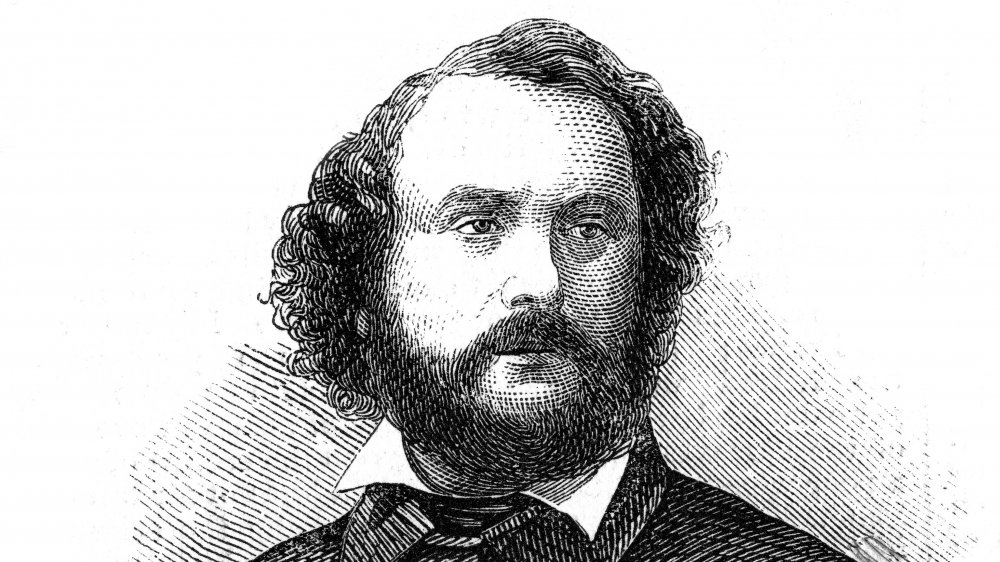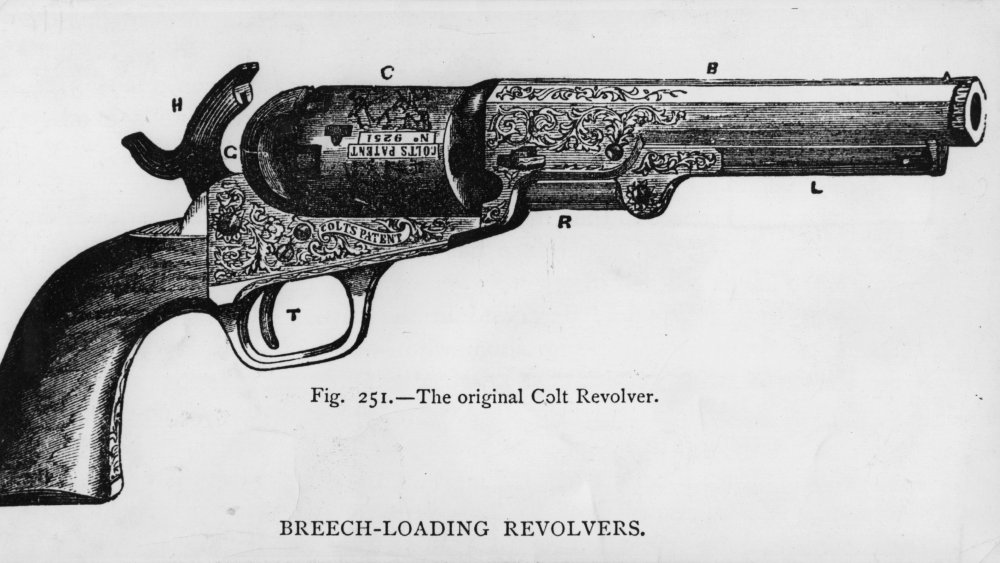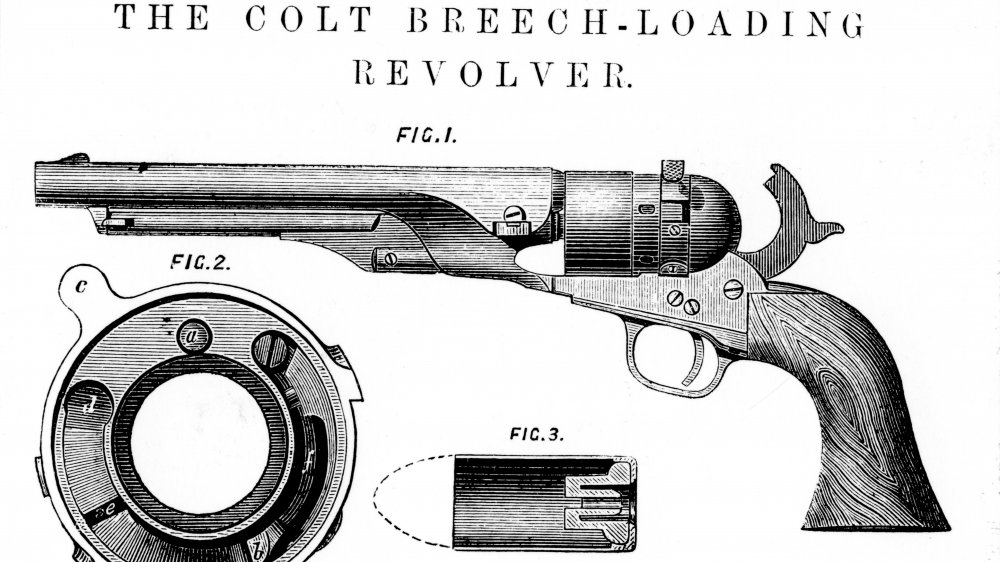The Untold Truth Of Samuel Colt
The gunfight is a staple of Western movies — characters shooting at each other with handguns. One of the men responsible for changing the West was Samuel Colt, the creator of the Colt handgun. His revolver was considered a Godsend to settlers going West, and changed not only the American frontier, but also the world. His genius extends far beyond the creation of his revolver; he helped revolutionize assembly line manufacturing and advertising.
Colt was born the second youngest of seven children in Hartford, Connecticut, according to PBS. His father had been a farmer but moved the family to the city so he could be a businessman. At 11, Samuel was indentured to a farmer so he could attend school. There he discovered the story of Robert Fulton, who created the first commercially viable steamboat. He also discovered gunpowder, sparking his interest in explosives and inventions. He was a reckless boy who accidentally set a fire in his schoolhouse, so his father packed him off to sea. While he was on the ship, Samuel carved a wooden model of gun that had a revolving chamber, inspired by the mechanism of the ship's wheel. His invention would be capable of firing more than one shot without reloading.
Once he returned, he began touring the country demonstrating the uses of laughing gas, wrote History. Colt wanted to save enough money to hire gunsmiths to make prototypes of his repeating revolver.
The Texas Rangers save the day
Colt received a patent for his version of a multi-shot revolver in 1836, and started his company, the Patent Arms Manufacturing Company in Patterson, New Jersey. At first, there was some interest, but Colt found his company floundering when the U.S. Army rejected his guns. His shareholders took control of his business, and in 1842, it was forced to shut down.
Undeterred, Colt decided instead to focus on inventing an underwater mine. He also worked with telegraph inventor F.B. Morse to set up a telegraph line from New York to New Jersey, but both eventually abandoned the project, with the line only going as far as Fire Island, explained History.
With the government encouraging Americans to settle in the West, Colt saw an opportunity to revive his pistol designs. He had kept tinkering with his revolver concept and submitted a new design to the U.S. War Department. In 1847, the Texas Rangers ordered 1,000 revolvers from Colt, wrote Smithsonian Magazine. It was the jolt he needed to revive his company, renamed the Colt Patent Fire-Arms Manufacturing Company, and Colt hired engineers to help mass-produce the guns. The company created a process whereby it could make at least 10,000 identical copies of the revolver, producing 150 guns a day, using interchangeable parts (a relatively new concept) and precision machinery. Colt's genius at marketing made sure that everyone knew the Colt brand.
He was a marketing genius
Smithsonian writes that before the revolver, the favored weapon in the West was a knife, especially the increasingly popular Bowie knife. But Colt believed in myth-making, and he knew he had to make his revolver legendary. He hired the artist George Caitlin to paint a Colt revolver being used by explorers and adventurers. He sought testimonials from customers, and made sure people knew the Colt brand was dependable and powerful. Colt even had slogans circulated, saying, "God created men equal, Col. Colt made them equal." Colt's guns were soon used not just by lawmen but by migrating settlers, gold rush prospectors, and cowboys.
By the time the Civil War broke out, Colt's guns were very popular, and he was one of the country's wealthiest men. History noted Colt had been supplying regular customers in the South but decided to provide guns to the Union Army exclusively. He received a commission as a colonel in the Union Army, too, after newspapers branded him a Southern sympathizer for selling guns to the South.
The strain of keeping an army supplied, though, took its toll on Colt. He died in 1862, a year after the Civil War began. He left behind his wife and heir, Elizabeth, who guided the company that's still in business today. Everyone knows the Colt .45, the descendant of Samuel Colt's original wooden model revolver. As for Colt himself, he never fired a gun at another person.


